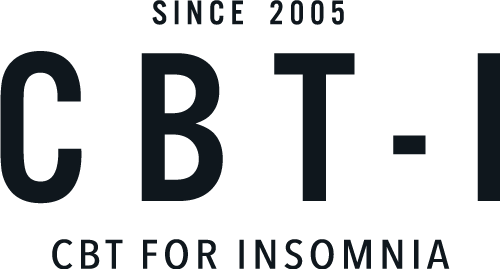Improving Sleep By Managing Stress
An important stress management technique that is essential for improving your sleep is cognitive restructuring. Cognitive restructuring (CR) means to change our mental, or cognitive, responses to stress. CR is based on the idea that we often respond to daily stressful events with a negative, distorted mental monologue. This monologue creates distressing emotions, moods, and feelings that activate the stress response and disturb sleep.
The Internal Monologue
When we are faced with stressful situations, our internal monologue is more likely to consist of negative distorted thoughts, called Negative Automatic Thoughts, or NATs. NATs are like knee-jerk reactions to stress that occur almost unconsciously. They often involve worst-case scenarios, jumping to conclusions, “awfulizing”, and “catastrophizing”. They seem so real that we don’t stop to question or examine them. Consequently, NATs can cause us to: lose perspective and cognitive flexibility, get locked into one-track thinking, accentuate the negative, and view stressful situations in an inaccurate, distorted fashion. When the negative monologue occurs too frequently or intensely in response to stress, unhealthy negative emotions like anxiety or anger can result. These emotions elicit stress responses that compromise our psychological and physical health and our sleep.
Minding the Mind
We often can’t change the situations that cause stress but we can change our emotional responses to stress using CR. This technique involves learning to recognize, challenge, and change NATs so that we can turn off negative emotions and stress responses more easily.
CR works in three ways: by reducing the frequency and intensity of negative emotional reactions, turning off the reactions more rapidly, and preventing them from occurring in the future. Let’s take a closer look at how to practice CR.
Eavesdropping on the Internal Monologue
The first step in CR is to become more aware of your thoughts and feelings that occur in response to stressful situations. The most difficult part of this step is recognizing NATs for they are so automatic. The most effective way to recognize NATs is to track, in writing, the feelings and NATs that accompany stressful situations. This will enable you to become more aware of the kinds of negative feelings that you experience most often; under what circumstances they occur; and, most importantly, the NATs in the periphery of your awareness that trigger the feelings. Each day, choose one or two stressful situations that triggered negative emotions, then record the NATs that filtered through your mind in anticipation of the situation, during the situation, or after the situation. Ask yourself, “What were my thoughts and what was I saying to myself about the situation that contributed to my feelings of stress?” By recording these thoughts on a regular basis, you will become more aware of the situations that cause you distress, the emotions that you typically experience in response to stress, and the kinds of NATs that you experience most often.
Three Methods for Reframing the Negative Monologue
After learning to become aware of NATs and the feelings they trigger, the next step in CR is to reframe NATs by writing down more accurate, adaptive thoughts about stressful situations, called “Reframed Thoughts”.
Reframing NATs is not always easy; however, there are a number of proven techniques that will make this easier for you. First, ask yourself the following ten key questions:
- Is this thought really true?
- Am I overemphasizing a negative aspect of this situation?
- What is the worst thing that could happen?
- Is there anything that might be positive about this situation?
- Am I catastrophizing, “awfulizing”, jumping to conclusions, and assuming a negative outcome?
- How do I know this situation will turn out this way?
- Is there another way to look at this situation?
- What difference will this make next week, month, or year?
- If I had one month to live, how important would this be?
- Am I using words like “never”, “always”, “worst”, “terrible”, or “horrible” to describe the situation?
Second, use the “double standard” technique developed by Dr. David Burns. This technique is based on the idea that, when it comes to explaining adverse events, we are often much harder on ourselves than we are on our friends. We operate on a double standard: we have realistic and fair standards that we apply to others whom we care about and we encourage them to reframe their reactions to negative events. In contrast, we set unrealistic standards for ourselves when we explain stressful events to ourselves.
To use the double standard techniques, examine your NATs and then ask yourself: “Would I say this to a close friend with a similar problem? If not, what would I say to him or her?”. The idea is to reframe NATs by giving yourself the same encouraging, empathic messages you would give a friend.
Third, reflect on past experience and yourself: “Has anything like this happened to me in the past and, if so, how did it turn out?” By doing so, we can often prove to ourselves that many of the things we worry about never happen; or, don’t turn our as badly as we imagine.
Because NATs are so automatic and habitual, the CR takes some time to learn. But, with practice, you can learn to use CR to turn off the negative stress filter, catch and reframe NATs, and develop a greater sense of control over your mental responses to stress- and your sleep.
